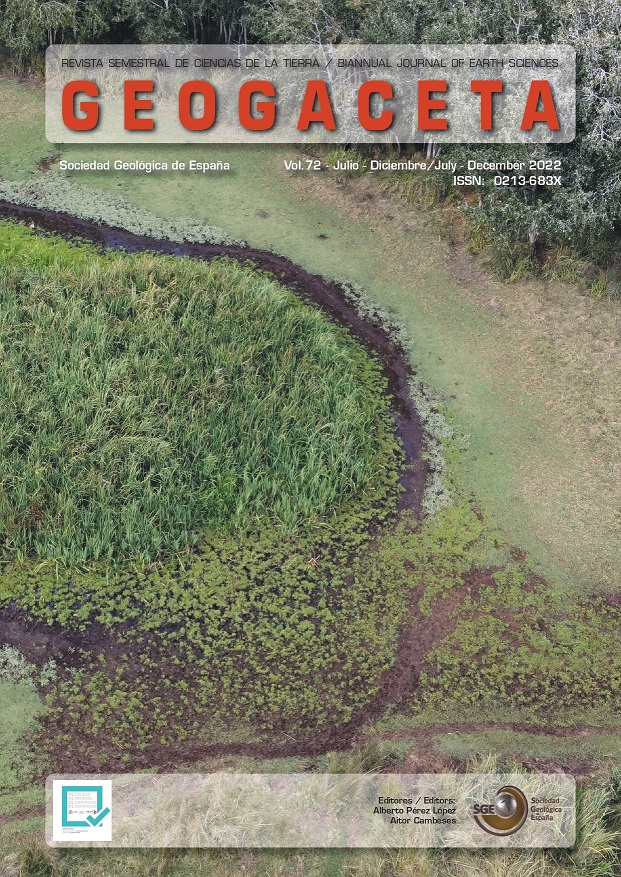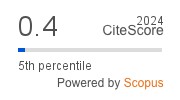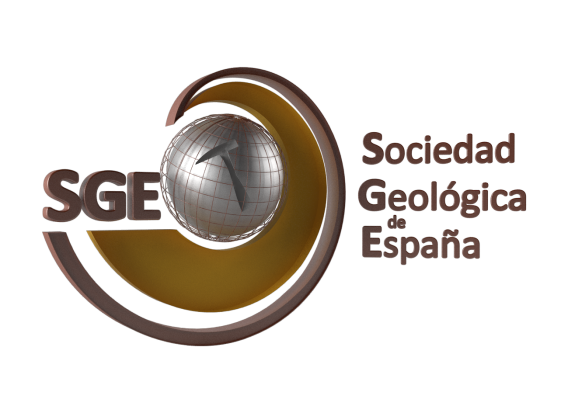Multianalytical characterization of Lanzarote basalts as a regolith simulant and lunar habitability resource
DOI:
https://doi.org/10.55407/geogaceta98030Keywords:
Lanzarote, habitability, terrestrial analogs, regolith, basalts, regolith simulantAbstract
The search for Terrestrial Analogues is essential for the development of future permanent or semi-permanent lunar bases. Terrestrial Analogues are zones where it is possible to probe not only scientific instruments but also to other astronaut capabilities in an environment that is similar to the geological context, geomorphology, mineralogical, geochemistry, etc that we can find on Mars, the Moon and even asteroids. This work has focused on a multi- analytical characterization of three Lanzarote regions (Maciot, Tao y Lavas de Timanfaya), with different geochemical and petrophysical test. These results have been compared with data provided by other authors on samples brought from the Apollo missions. This has allowed to determine the analogy between the study regions and the Apollo 14 moon landing site known as Fra-Mauro formation. In addition, it is concluded which resources are potentially extractable from the Moon regolith and its function in a future semipermanent lunar base. Finally, it is proposed the possibility of developing the first Spanish lunar soil simulant through one of the Lanzarote basalts.
References
Alberquilla, F. (2021a). International Journal of Earth Sciences, 111, 589-590. https://doi.org/10.1007/s00531-021-02121-w
Alberquilla, F. (2021b). Multianalytical characterization of Lanzarote basalts as a prototype of lunar habitability resource, Hydrocarbon Exploration and Mineral Resources thesis, Complutense University of Madrid (UCM), 51 p.
Caruso, J., Spina, D., Greer, L., John, W., y Michele, C. (2008). In 46th AIAA Aerospace Sciences Meeting and Exhibit (p. 808).
Dickinson, T., Taylor, G. J., Keil, K., Schmitt, R. A., Hughes, S. S., y Smith, M. R. (1985). Journal of Geophysical Research: Solid Earth, 90(S02), C365-C374. https://doi.org/10.1029/JB090iS02p0C36
Evensen, N. M., Hamilton, P. J., y O'nions, R. K. (1978). Geochimica et cosmochimica Acta, 42(8), 1199-1212. https://doi.org/10.1016/0016-7037(78)90114-X
Gibson, M. A., y Knudsen, C. W. (1985). In Lunar bases and space activities of the 21st century, p. 543.
Giguere, T. A., Taylor, G. J., HAWKE, B. R., y Lucey, P. G. (2000). Meteoritics & Planetary Science, 35(1), 193-200. https://doi.org/10.1111/j.1945-5100.2000.tb01985.x
Kiefer, W. S., Macke, R. J., Britt, D. T., Irving, A. J., y Consolmagno, G. J. (2012). The density and porosity of lunar rocks. Geophysical Research Letters, 39(7). https://doi.org/10.1029/2012GL051319
Lanzarote and Chinijo Islands Geopark (2014) https://www.geoparquelanzarote.org/geositios/. Accessed 26 July 2020
Lindstrom, M. M., Crozaz, G., y Zinner, E. (1985). In Lunar and Planetary Science Conference (Vol. 16, pp. 493-494).
Martínez Frías, J., Mateo Mederos, M., y Lunar Hernández, R. (2016). Geotemas, 16(2), 343.
Martínez Frías, J. (2020). Canarias: Una plataforma geológica y astrobiológica mundial para la Luna y Marte. Investigación y Ciencia. https://www.investigacionyciencia.es/blogs/astronomia/71/posts/canarias-una-plataforma-geolgica-y-astrobiolgica-mundial-para-la-luna-y-marte-18809 (28, nov., 2022).
Martínez J. E, y Mariñoso P.E. (2020). International Journal of Earth Sciences, 109(8), 2697-2698. https://doi.org/10.1007/s00531-020-01925-6
Muhs, D. R., Budahn, J., Skipp, G., Prospero, J. M., Patterson, D., y Bettis III, E. A. (2010). G Terra Nova, 22(6), 399-410. https://doi.org/10.1111/j.1365-3121.2010.00949.x
Neal, C. R., y Taylor, L. A. (1992). Geochimica et Cosmochimica Acta, 56(6), 2177-2211. https://doi.org/10.1016/0016-7037(92)90184-K
Papike, J. J. (Ed.). (2018). Planetary materials (Vol. 36). Walter de Gruyter GmbH y Co KG. Chapter 5 (5-161).
Rodríguez-Losada, J. A., Hernández-Fernández, S., Martínez-Frías, J., Hernández, L. E., y Lunar Hernández, R. (2010). In ISRM International Workshop on Rock Mechanics and Geoengineering in Volcanic Environments. OnePetro.
Taylor, G. J., Martel, L. M., Lucey, P. G., Gillis-Davis, J. J., Blake, D. F., y Sarrazin, P. (2019). Modal analyses of lunar soils by quantitative X-ray diffraction analysis. Geochimica et Cosmochimica Acta, 266, 17-28. https://doi.org/10.1016/j.gca.2019.07.046
Warner, R. D., Taylor, G. J., Conrad, G. H., Northrop, H. R., Barker, S., Keil, K., ... y Schmitt, R. (1979). Apollo 17 high-Ti mare basalts-New bulk compositional data, magma types, and petrogenesis. In Lunar and Planetary Science Conference Proceedings (Vol. 10, pp. 225-247).
Yilmaz, N. G., y Goktan, R. M. (2019). Bulletin of Engineering Geology and the Environment, 78(6), 4493-4503. https://doi.org/10.1007/s10064-018-1382-7
Zheng, Y., Wang, S., Ouyang, Z., Zou, Y., Liu, J., Li, C., ... y Feng, J. (2009). CAS-1 lunar soil simulant. Advances in Space Research, 43(3), 448-454. https://doi.org/10.1016/j.asr.2008.07.006
Downloads
Published
How to Cite
Issue
Section
License
Until the year 2023 the author assigned the copyright to the Sociedad Geológica de España, but from 2024 the author retains the copyright and grants the Sociedad Geológica de España the right of first publication and non-exclusive distribution of each article in all current or future media, while transferring, also non-exclusively, the commercial rights for the distribution of the printed version of Geogaceta. On the other hand, the articles, from the year 2023, are available simultaneously with their publication, under the Creative Commons CC BY-NC-SA 4.0 license, which allows copying, transforming the work, but if any transformation is distributed, the new work must be distributed under the same license, and never for commercial purposes, while acknowledging the authorship and original publication in GEOGACETA, so that the only role of copyright is to give authors control over the integrity of their works and the right to be properly acknowledged and cited.









